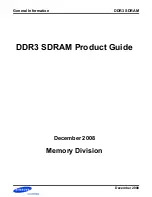
Connect Tech Blue Heat/Net User’s Manual
86 Revision 0.13
RS-232
This option sets the line interface mode to RS-232. In models supporting both RS-232 and RS-
422/485, the default setting is RS-232.
RS-485 Options (on RS-422/485 ports)
This option is checked to access the following options, available on RS-422/485 models of the
Blue Heat/Net:
Full Duplex
(default)
In this mode TxD & RxD are active all the time. This mode is typically used in point-to-point
situations much like RS-232. RTS and CTS can be used along with the data signals.
Half Duplex
In this mode the TxD line driver is only enabled when data is transmitted, and RxD is disabled
when data is being transmitted. This mode is typically used in either point-to-point "two wire"
connections OR in multi-drop "two wire" bussed connections. CTS and RTS are not usually used
with this configuration.
Multi-Drop Slave
In this mode the TxD line driver is only enabled when data is transmitted and RxD is enabled all
the time. This mode is typically used in multi-drop "four wire" connections. RTS and CTS are
not usually used in this configuration.
Line Bias and Termination
This enables the line and bias termination.
Baud Rate Mapping
In some applications, high or unusual baud rates such as 230400 bps cannot be specified
directly. For such situations, two baud rates (110 bps and 300 bps) are provided which can be
mapped to different values if necessary.
Figure 46: Baud Rate Mapping options
By default 300 baud is mapped to 230400 baud. In this case, an actual baud rate of 230400 will
be set when 300 baud is specified.
If baud rate mapping is not desired, specify the same baud rate in the edit box beside each of the
selections. For example 300 would be set to 300 and 110 would be set to 110.
COM Port Number
The Blue Heat/Net driver supports the ability to change COM port names, also referred to as
COM port mapping. Use this combo box to change the COM port number to be used for the
current port. For example specifying COM5 would set the COM name for this port to COM5.
Ensure the COM name selected is not already in use or the port may not respond properly.
















































